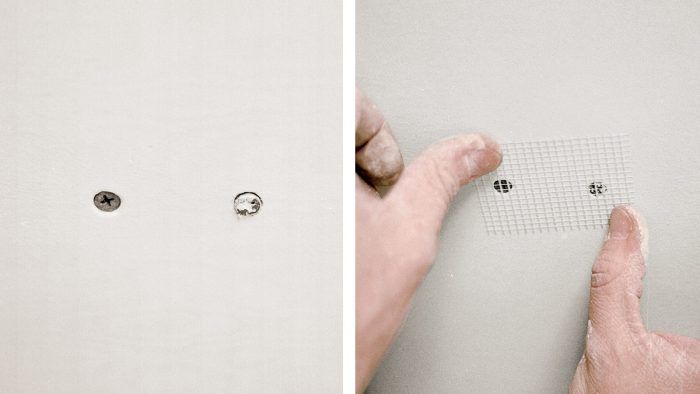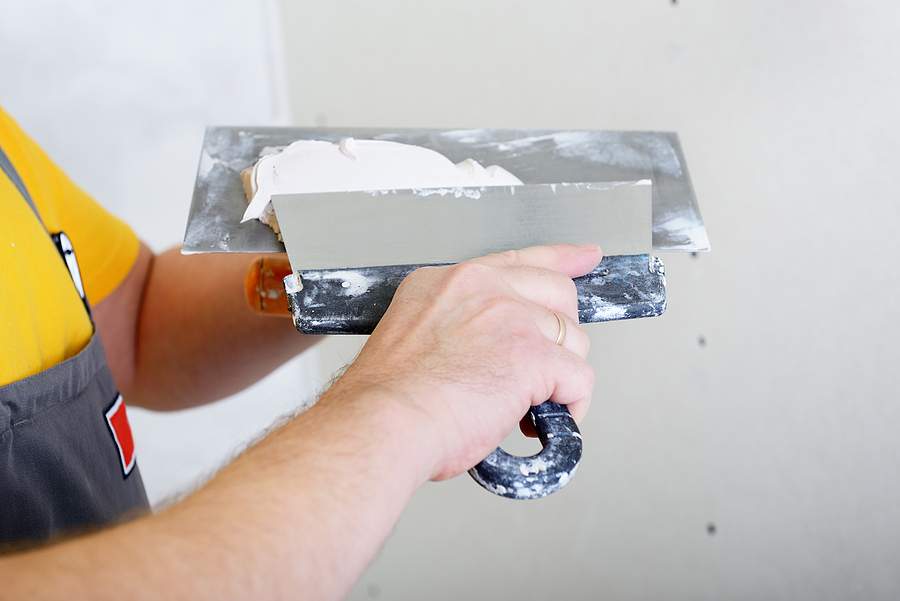Discover the Ideal Practices for Effective Drywall Repair and Installation
The art of drywall fixing and setup calls for a mix of skill and accuracy. Understanding the necessary tools is vital for attaining a smooth coating. Understanding the step-by-step process can make a substantial difference in the outcome. Appropriate techniques for mudding and taping are likewise critical. What stays is the expertise of maintenance that assures longevity. These components together develop a refined end result worth exploring better.

Important Tools for Drywall Repair Service and Setup
When embarking on drywall fixing and installation, having the right devices can significantly enhance the efficiency and top quality of the work. An utility knife is important for reducing drywall sheets exactly, while a drywall saw can help in making a lot more intricate cuts. Taping knives, available in various dimensions, are vital for applying joint substance efficiently and uniformly. A drywall sander, ideally with a dust collection feature, helps achieve a sleek coating, lowering the demand for comprehensive cleanup.
Furthermore, a gauging tape guarantees precise measurements, and a level makes sure that setups are straight and plumb. Safety and security equipment, including dust masks and safety glasses, should not be ignored to protect against debris and dirt. Ultimately, a stud finder aids in finding mounting participants, ensuring safe installation. By gearing up oneself with these important devices, the repair work and installation procedure becomes extra workable and leads to a professional-quality end result.

Step-by-Step Overview to Patching Holes
Patching holes in drywall calls for an organized strategy to assure a smooth repair. The area around the opening have to be cleaned and any type of loose particles eliminated. For small holes, a putty knife can be made use of to use a light-weight spackle, pushing it into the opening and smoothing the surface. After it dries, sanding is crucial to produce a flat coating. For bigger openings, a patch of drywall might be necessary. This entails cutting an item of drywall a little bigger than the opening, safeguarding it to the wall with screws, and making use of joint substance to cover the seams. Once the compound dries out, it should be sanded smooth. Ultimately, topping the patched area before painting will certainly assure an even coating. Adhering to these steps will cause a professional-looking fixing that mixes flawlessly with the bordering wall surface.
Methods for Smooth Drywall Setup
Accomplishing smooth drywall installment needs mindful planning and execution. It is essential to cut and gauge drywall sheets precisely to decrease gaps. Utilizing an utility blade, installers ought to score the board prior to breaking it along the cut line, ensuring clean sides. Properly aligning the sheets is important; beginning with the leading and working down assists maintain uniformity.
Fastening drywall to the studs calls for constant spacing, usually every 16 inches, using screws instead than nails for much better hold. This method reduces the danger of stands out over time. Additionally, startling the seams between sheets improves structural integrity website link and minimizes the visibility of joints.
Finally, utilizing the appropriate density of drywall for details areas-- such as moisture-resistant key ins washrooms-- further adds to a perfect finish. Following these strategies will certainly cause a smooth and professional-looking setup, setting the phase for the succeeding ending up procedures.
Finishing Touches: Taping and Mudding
Completing touches, such as mudding and taping, play a crucial function in achieving a polished drywall surface area. Taping involves using a slim strip of drywall tape over the seams and joints, guaranteeing a seamless appearance. This process helps protect against cracks and develops a solid bond in between drywall sheets. It is crucial to choose the appropriate sort of tape, with paper and fiberglass fit together being the most common options.
Mudding, or using joint compound, follows insulation. This substance completes voids and smooths out the surface for an uniform finish. It is commonly applied in several layers, with each layer needing to dry prior to fining sand. Correct strategy includes feathering the sides to mix the compound into the bordering drywall, lessening presence.
When finished appropriately, taping and mudding improve both the structural and aesthetic honesty of the drywall installment, leading to a professional-quality surface.
Tips for Preserving Your Drywall After Installation

Furthermore, preserving a regular indoor humidity level can stop warping or mold and mildew growth. Using a dehumidifier in damp areas, like basements, is suggested. It's additionally useful to periodically repaint areas that reveal wear, as this safeguards the underlying product. When relocating visit here furnishings or setting up components, care should be exercised to stay clear of harming the drywall. By adhering to these maintenance ideas, homeowners can prolong the life of their drywall, securing it continues to be an appealing feature of their interiors.
Frequently Asked Questions
What Safety Gear Is Essential for Drywall Repair Service and Installment?
For drywall fixing and installment, vital safety and security gear consists of safety and security goggles to shield eyes, dust masks to avoid breathing of fragments, gloves for hand defense, and knee pads for comfort throughout prolonged kneeling. Drywall Installation Ogden Utah.
How Do I Identify the Drywall Thickness Needed for My Job?
To establish the drywall density required for a task, one need to take into consideration the wall surface's structural requirements, neighborhood building regulations, and the intended use of the space, usually opting for 5/8-inch or 1/2-inch drywall.
Can I Fix Drywall Without Removing Furnishings From the Space?
Yes, drywall can be fixed without removing furniture from the area. Mindful preparation and safety steps can decrease mess, allowing for effective fixings while maintaining bordering products risk-free from dirt and damages during the procedure.
What Kinds of Drywall Are Ideal for Various Atmospheres?
Moisture-resistant drywall is optimal for kitchens and restrooms, while soundproof drywall suits shared wall surfaces in homes. Fire-rated drywall is best for garages, and conventional drywall functions well generally living areas, guaranteeing durability and viability for various atmospheres.
How much time Does It Take for Drywall Mud to Dry Entirely?
Drywall mud typically takes 24 to 2 days to dry completely, depending upon elements like humidity and temperature level (Drywall Repair Ogden UT). Thicker applications might need longer drying times, while thinner layers can dry out faster. Proper ventilation aids drying out
The art of drywall repair and installation needs a mix of skill and precision. When carrying out drywall repair service and installation, having the right tools can greatly improve the effectiveness and quality of the job. An energy blade is vital for reducing drywall sheets specifically, while a drywall saw can assist in making extra elaborate cuts. internet Accomplishing smooth drywall setup demands cautious planning and execution. Moisture-resistant drywall is ideal for kitchen areas and bathrooms, while soundproof drywall matches shared walls in apartments.